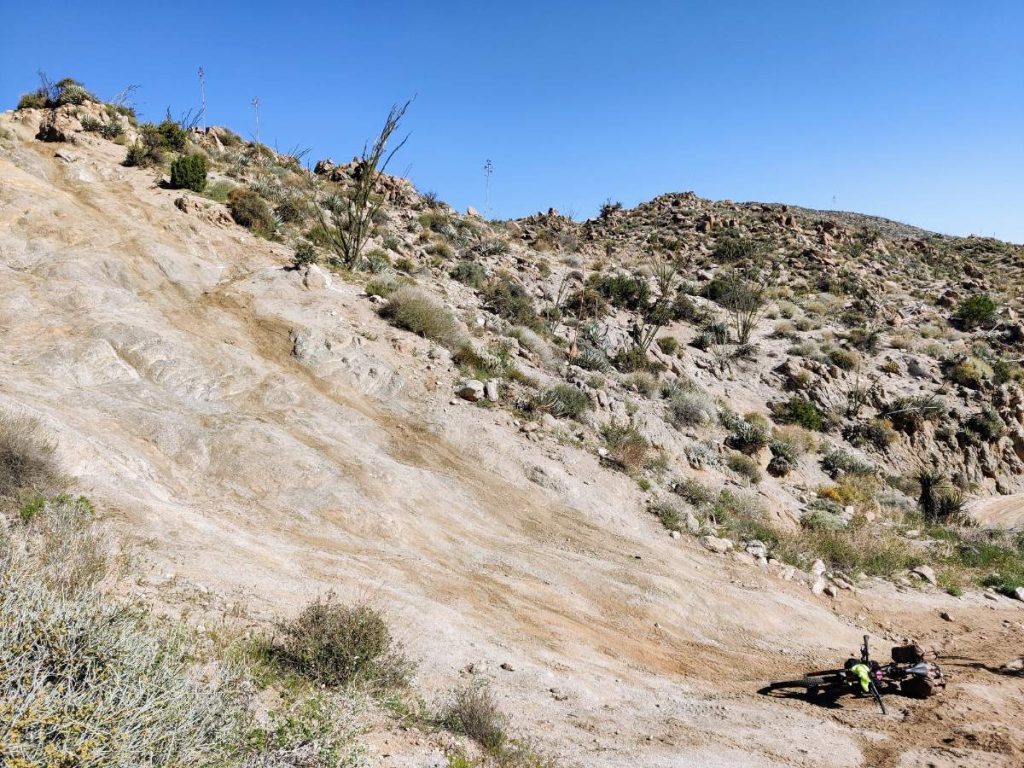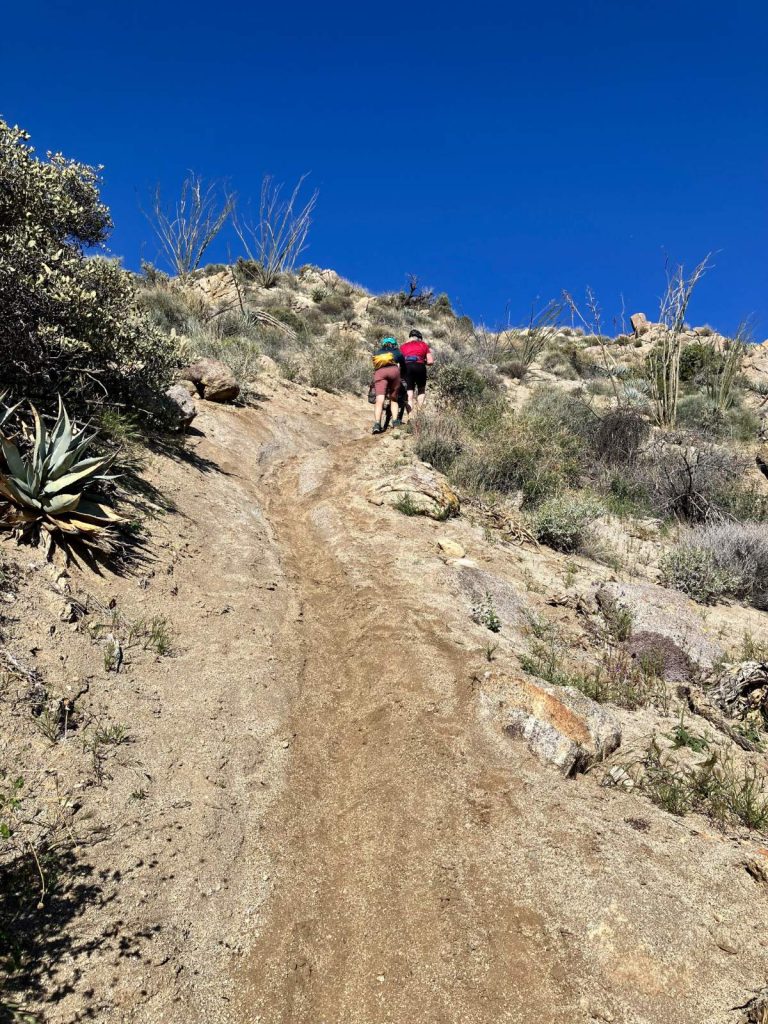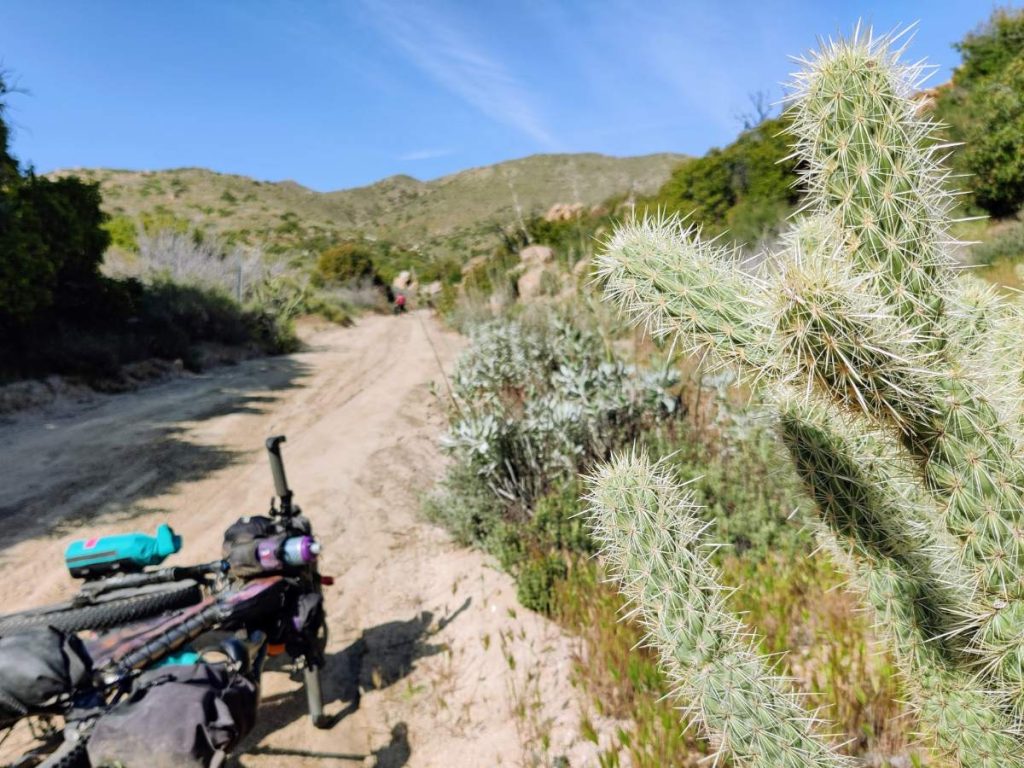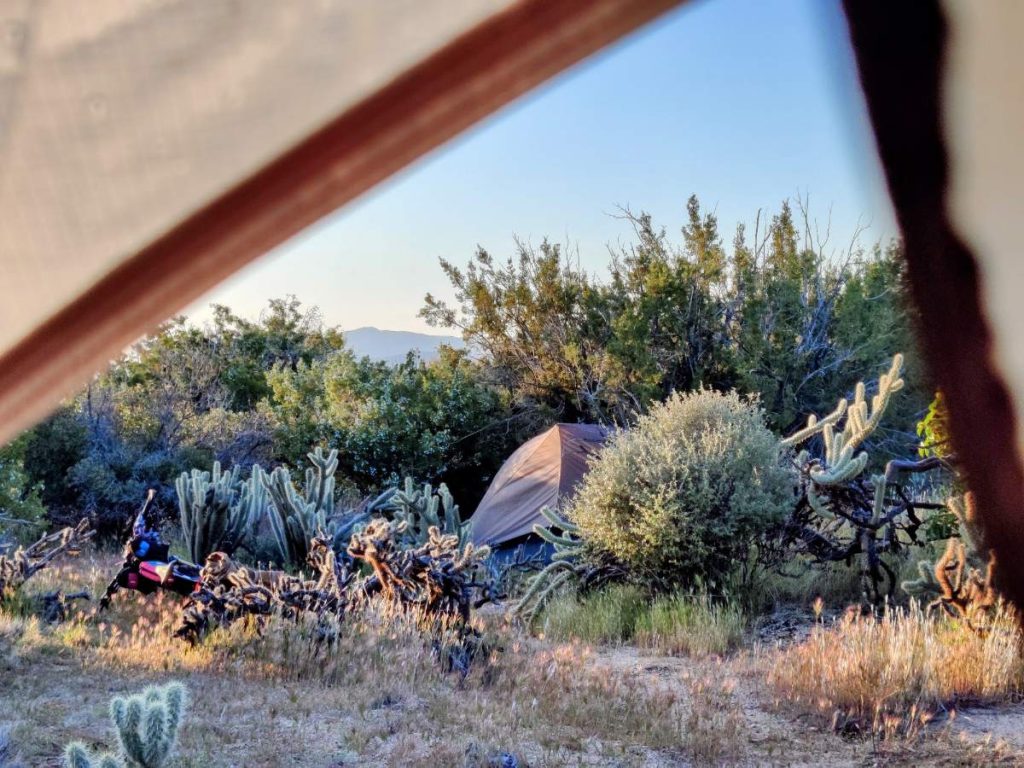Day 3
25 miles and 2700 feet of climb, to just after the route turns right out of Grapevine Canyon
The night was chilly but we were cozy in our tents, and the sun warmed us quickly in the morning. We set out to finish the last bit of climb and quickly realized the character had shifted. We were now on a rugged jeep road with some truly impressive obstacles, and we marveled at the skill of the drivers we had seen navigating them from afar the evening before!
This section required some patience and strength for the short steep hike-a-bikes, including one truly epic section where we teamed up with two people per bike. (Hint: look for the motorbike bypass on the steepest rocky climb.) We were finally rewarded by a smooth and fast descent down to Stagecoach RV Resort, our first real descent of the route.

Side view of the steepest section of road. Two of us teamed up to get one bike up this monster before deciding the motorbike bypass would be easier.

Teaming up to push another bike up the easier, but still steep, motorbike bypass (photo by Genna)

Hard-earned view from the top of the steep climb
We were disappointed, and somewhat surprised, to realize we hadn’t checked the Stagecoach RV Resort’s hours. They are closed on Sundays and Mondays! We were able to fill water from the spigot out front, buy drinks from the vending machine, and charge our devices at an outlet, but couldn’t enjoy the pizza and ice cream cruelly displayed on the signs out front. After some discussion we decided our collective food supply would be enough to get us through the route successfully, if a bit hungrily, so we rolled out on the pavement toward Highway 78.
The four mile descent on Highway 78 wasn’t too bad, but only because all the traffic was going the other way. On Sunday afternoon all the RVs and toy haulers drive west back toward the coast, and I could not imagine trying to climb that shoulderless road amongst them. Fortunately we had chosen to ride clockwise and the descent to Grapevine Canyon passed quickly.
At Grapevine Canyon we started another gradual climb, a bit steeper than Fish Creek Wash but less sandy. There are potentially some springs in the area (not reliable) and a cultural preserve where dispersed camping is NOT allowed, but we already had plenty of water and kept pedaling.

Just after turning right out of Grapevine Canyon
After six miles of gradual climbing, the route leaves the canyon. Within half a mile there is a nice flatish area with good campsites hidden amongst juniper and cholla (check carefully for spikes before setting up your tent!). We settled in here and had a clear, somewhat windy night, though not nearly as windy as our first.

Looking out of my tent at my riding companion’s tent on the morning of day 4
 CampingSurvivalistHuntingFishingExploringHikingPrivacy PolicyTerms And Conditions
CampingSurvivalistHuntingFishingExploringHikingPrivacy PolicyTerms And Conditions
